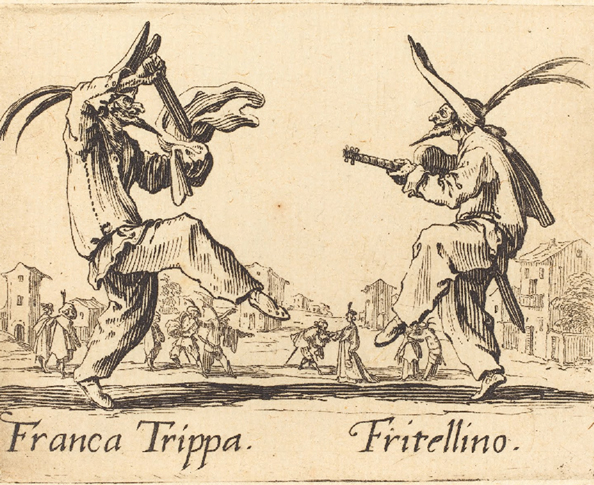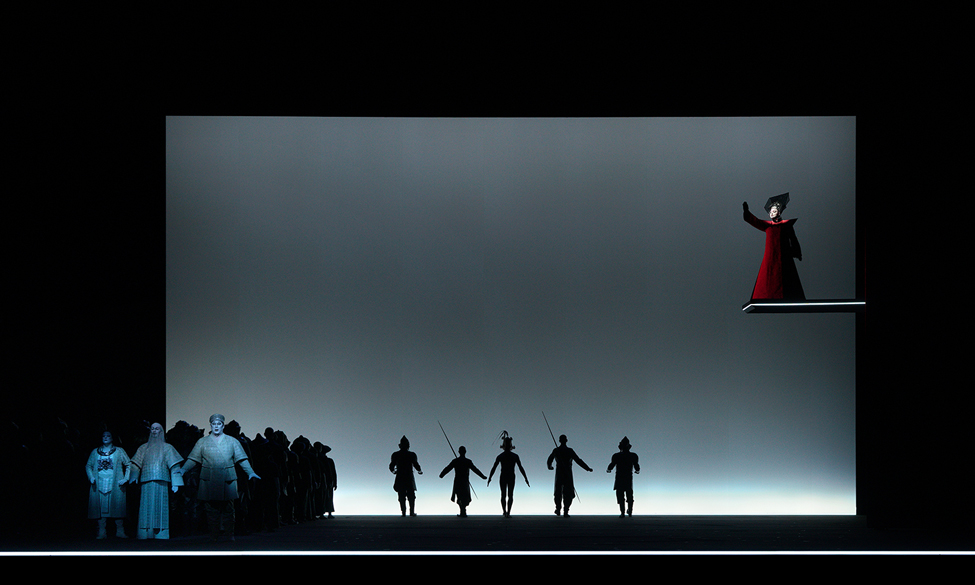-
Your Guide to Puccini's Turandot
By COC StaffPosted in 1920 Iréne Theorin as Turandot in Turandot (Teatro Real Madrid, 2018)
Iréne Theorin as Turandot in Turandot (Teatro Real Madrid, 2018)“I have placed in this opera all my soul” – Puccini
What Makes Turandot So Special?
Big emotions: “Nessun dorma” (“None shall sleep”) at the top of Act III is Turandot’s musical calling card. Popularized by Luciano Pavarotti at the 1990 FIFA World Cup, it’s the tune that films, commercials, and reality shows reach for when things get larger than life. In a dramatic high-point of the opera, Princess Turandot forbids the citizens of her city from sleeping until they discover Calaf’s name. With his life now hanging in the balance, Calaf delivers a show-stopping piece full of bravado, reaching a triumphant crescendo with his cry, “Vincerò!” (“I will win!”).
Immersive theatre: Director Robert Wilson’s signature style embraces theatre’s unique power to elevate us beyond the everyday, with mesmerizing, celestial bars of light; bright white makeup inspired by silent film and Vaudeville theatre; precise, repeated gestures executed in hypnotic slow motion, and a striking set design that combines the massive with the minimal. Read more about Robert Wilson's approach here.Modern commedia dell’arte: Originating in 16th-century Venice, commedia dell’arte used an ingenious theatrical shorthand of archetypal characters, exaggerated gestures, and masks to present its stories. Puccini’s opera, written in the 1920s, calls back to this form, as does Robert Wilson’s directorial focus on gestures and tableaux.
 Commedia dell’arte characters of Franca Trippa and Fritellino, etchings by Jacques Callot (c. 1622)
Commedia dell’arte characters of Franca Trippa and Fritellino, etchings by Jacques Callot (c. 1622)The Story
Princess Turandot knows that marriage can be a dangerous commitment. That’s why all her suitors must answer three riddles — and if they get even one wrong, they must die. Despite the mortal risk, the exiled prince Calaf is determined to try and win her heart.Puccini's Final Masterpiece
Turandot’s subject matter was a departure for Puccini, who had spent almost the entirety of his career writing operas rooted in realism — La Bohème, for example, is about penniless artists trying to make it in Paris; Tosca is a thriller about an opera singer caught in a game of cat-and-mouse during the French Revolutionary Wars. But with Turandot, Puccini took a decisive turn away from stories about real people in specific places and entered a realm of the fantastical.
He worked obsessively on the score for Turandot for four years, rushing to create the first draft before he even had a libretto from collaborators Giuseppe Adami (who had previously collaborated with Puccini on La Rondine and Il tabarro) and Renato Simoni. He wrote to his librettists “Hour by hour, minute by minute I think of Turandot, and all my music that I have written up to now seems to me something quite different, and pleases me no more” and “I don’t think I have ever become so absorbed in a work as I am in Turandot.”
Turandot is arguably Puccini’s most musically adventurous piece. Part of the score, including the folk melody “Mo Li Hua” (“Jasmine Flower”) heard as a theme running through the opera, were based off melodies from a Swiss music box, acquired in China, which belonged to an acquaintance of Puccini’s. He also commissioned a set of 13 pitched gongs specifically for the opera.
Sadly, Puccini was diagnosed with throat cancer and died before completing the opera. Perhaps sensing the end, he implored his friend and famed conductor, Arturo Toscanini, “Don’t let my Turandot die.” He had fully completed the music and orchestration up to Liù’s death and funeral in the third act, so composer Franco Alfano was brought in to finish the opera based on Puccini’s notes for the ending. At Turandot’s first performance in 1926, over a year after Puccini’s death, Toscanini stopped the opera with the final note Puccini composed, and upon putting down his baton, declared “Here the Maestro laid down his pen.” A scene from Turandot (Teatro Real Madrid, 2018)
A scene from Turandot (Teatro Real Madrid, 2018)Changing the Way You See
Experiencing a Robert Wilson production is like “going to a whole new galaxy” says Janice Price, President and CEO of Banff Centre for Arts and Creativity, who led Toronto’s Luminato Festival when it presented Wilson’s groundbreaking collaboration with Philip Glass, Einstein on the Beach, in 2012.
He’s become “a towering figure in the world of experimental theater” (The New York Times), and his formalized, abstract style has had a huge impact on the look of the performing arts since the 1960s, with hypnotic, slow-motion gestures, minimalist set design, and striking colour palettes taking centre stage.
Wilson’s artistic partnerships have included dancer Mikhail Baryshnikov, performance artist Marina Abramovic, actors Brad Pitt and Robert Downey Jr., and singer/songwriter Lady Gaga, a testament to his enormous impact at all levels of theatre and performance.
Most importantly for you, the audience, his theatrical practice creates a space “for the spectator to really free themselves,” says Pia Kleber, Professor of Drama and Comparative Literature at the University of Toronto. Within a minimalist stage stripped of conventional interpretative markers and with actors moving in abstract choreography that’s closer to ritual than realism, Wilson offers us an original encounter to change how we see and hear art.
Join us for Puccini's Turandot, on stage from September 28 to October 27, 2019 at the Four Seasons Centre for the Performing Arts.
YOU MIGHT ALSO LIKE...
The Turandot Problem by Richard Lee
Director's Notes: Turandot by Robert Wilson
Photo credits: Turandot production photos by Javier del Real; Trippa: R.L. Baumfeld Collection, National Gallery of Art (Washington, DC, USA).
